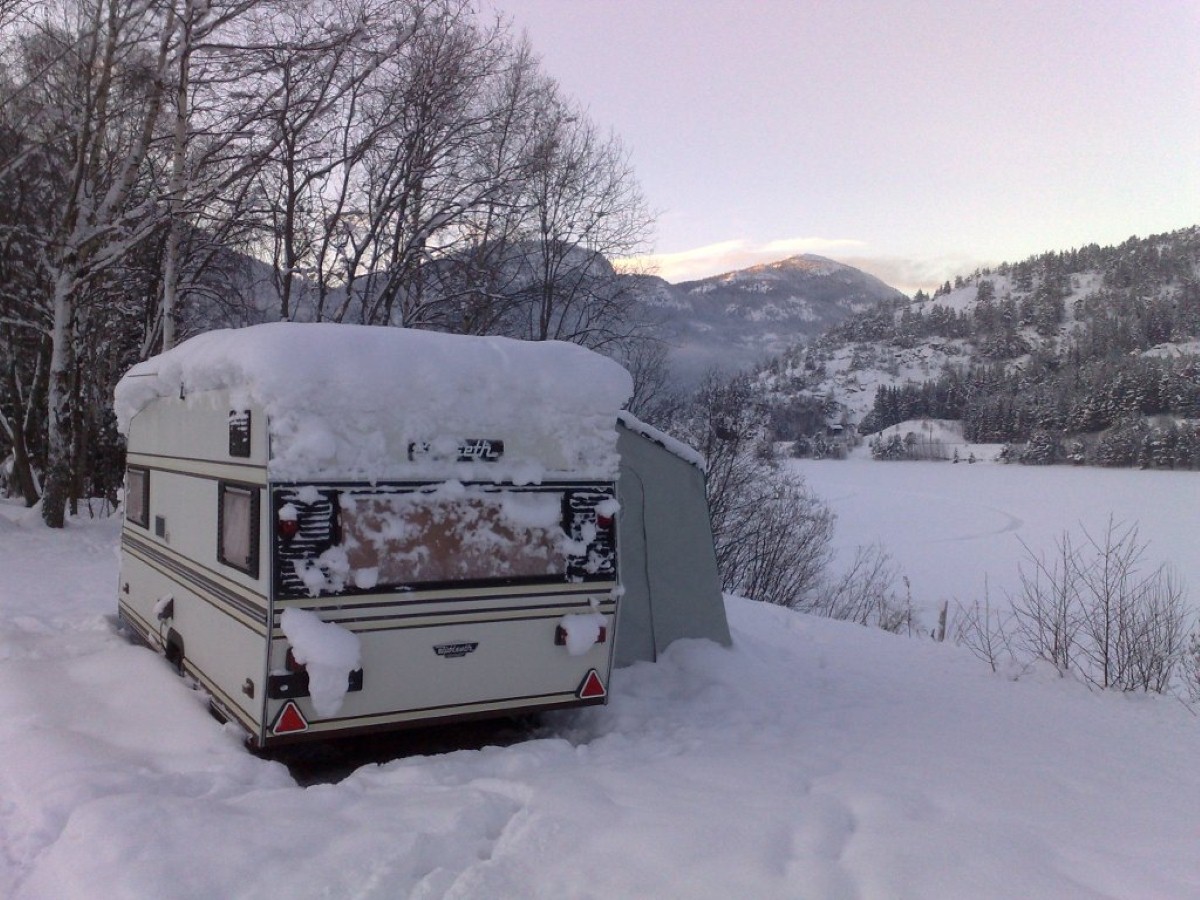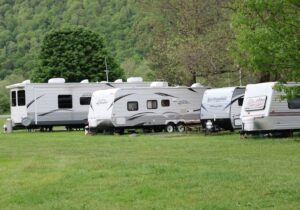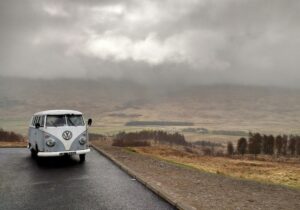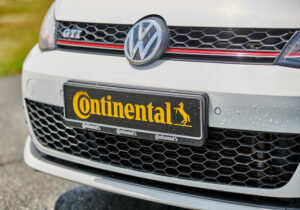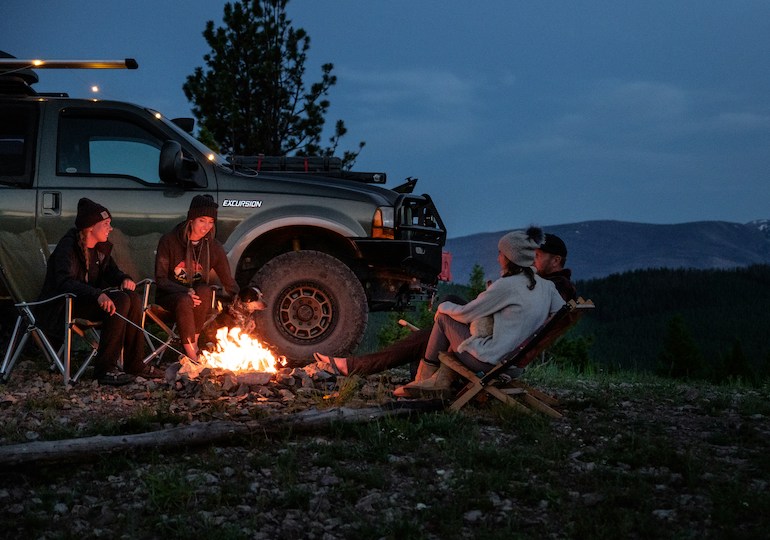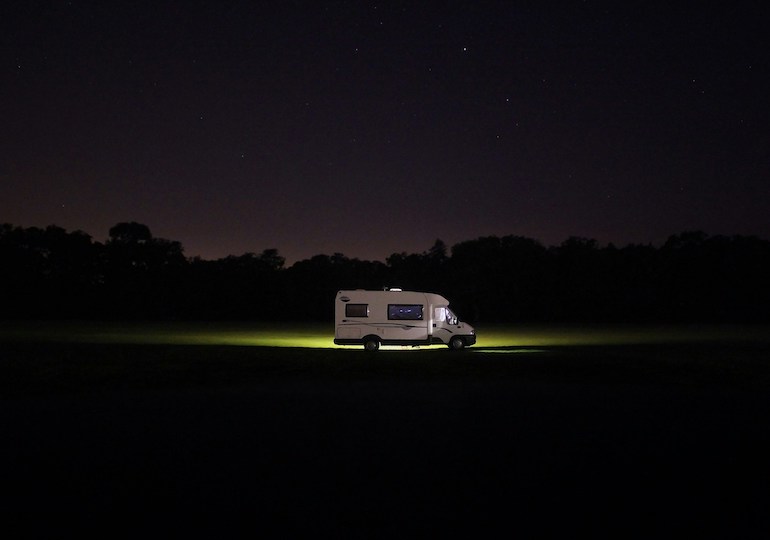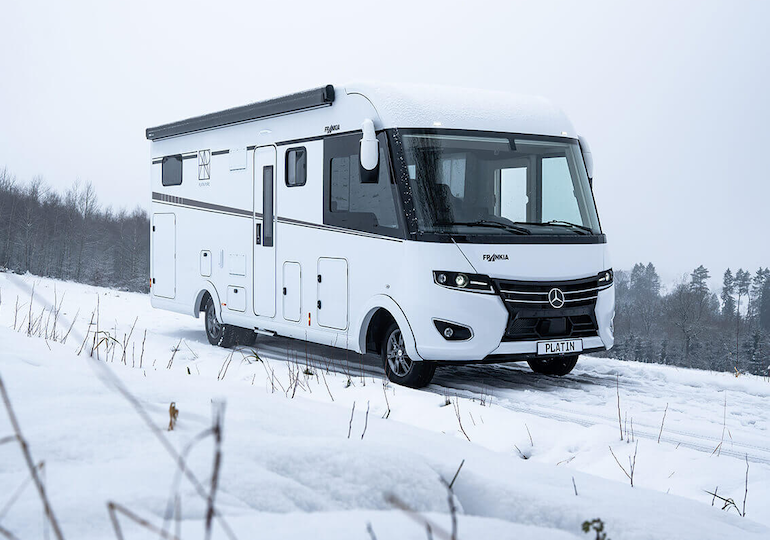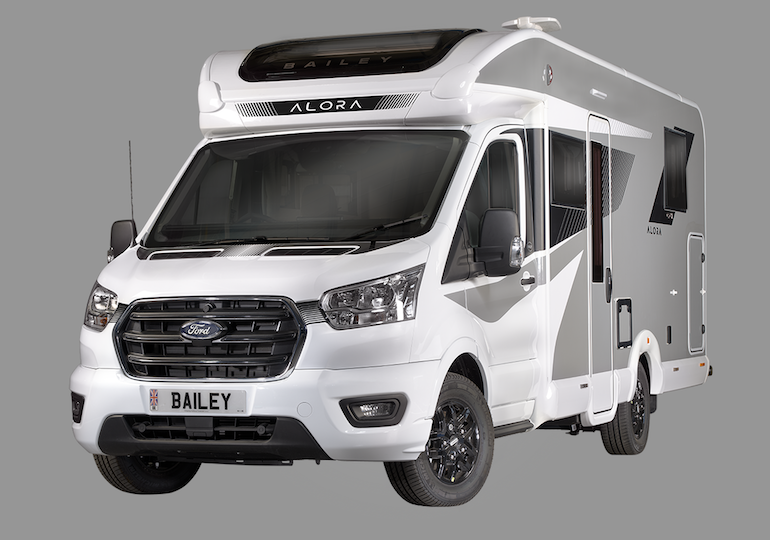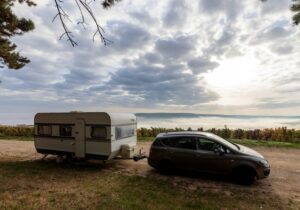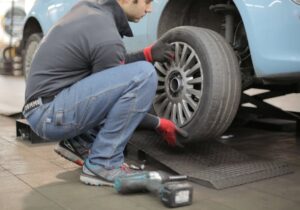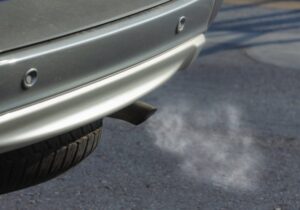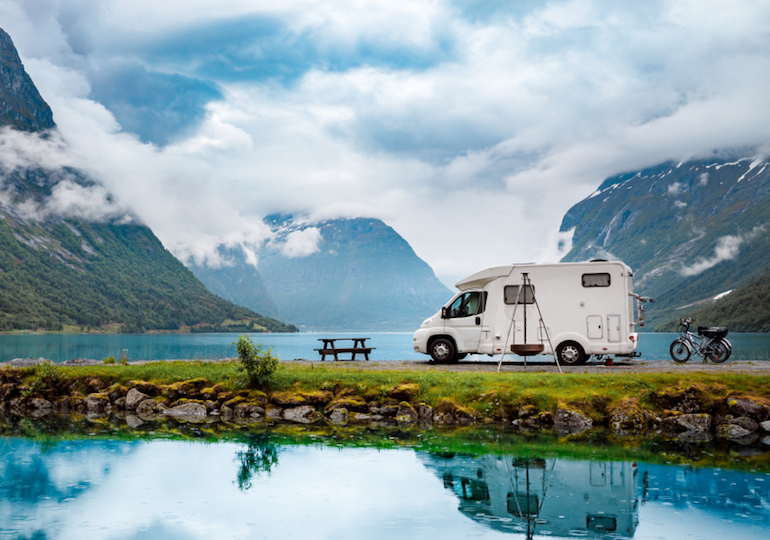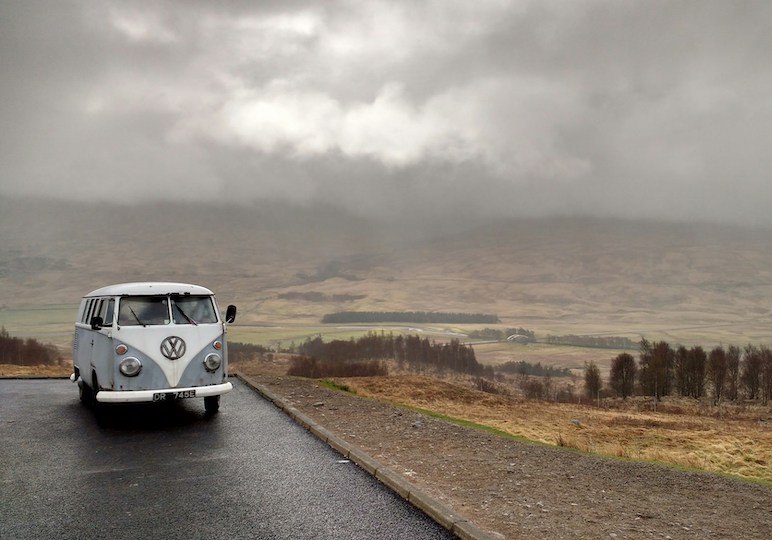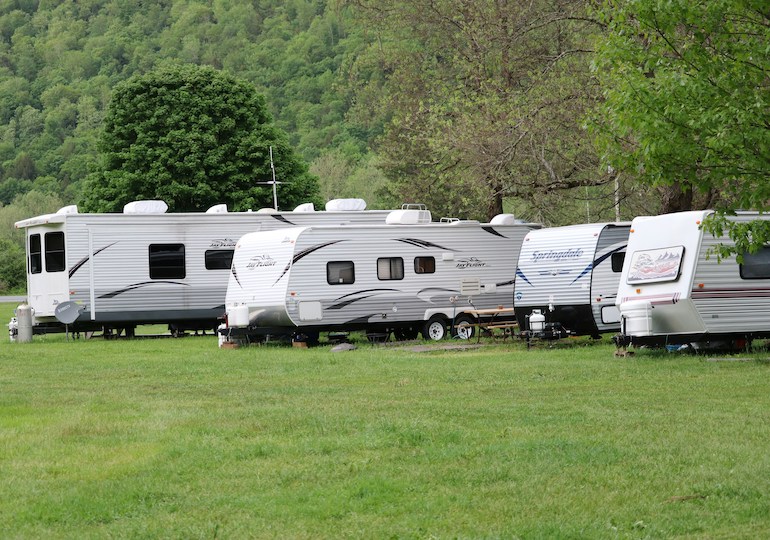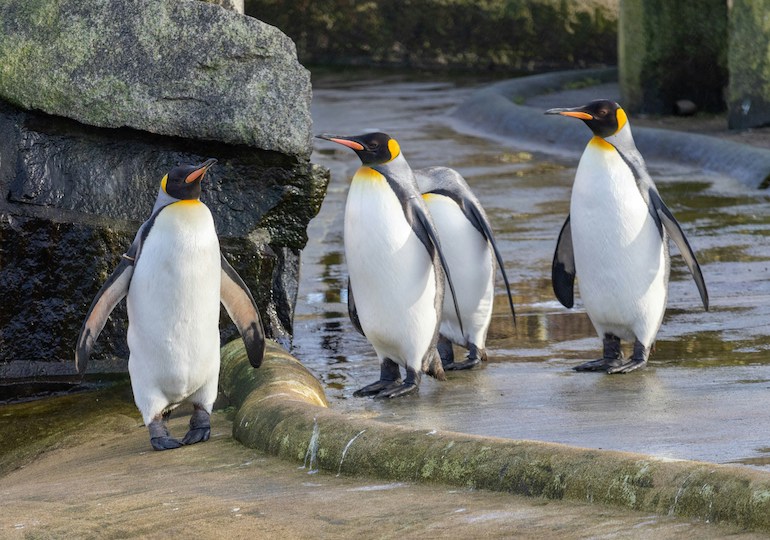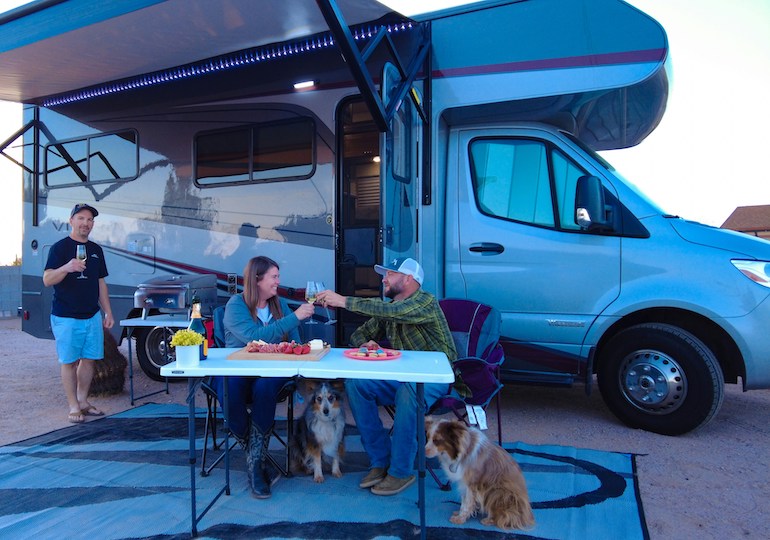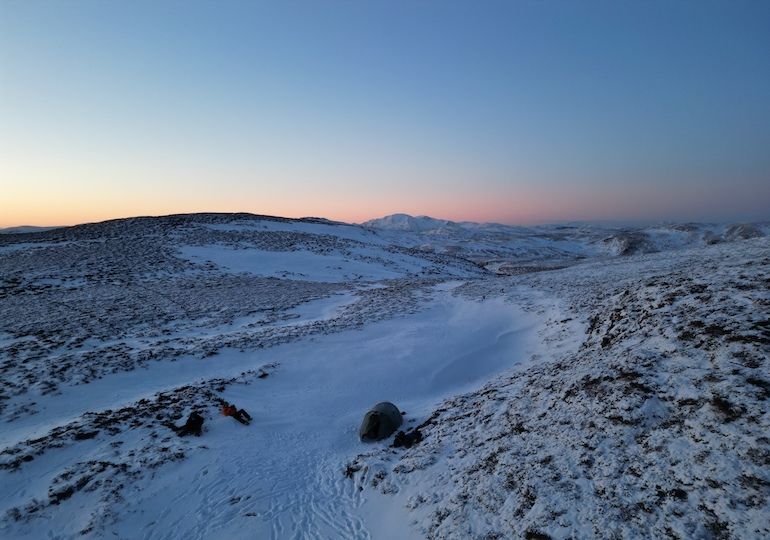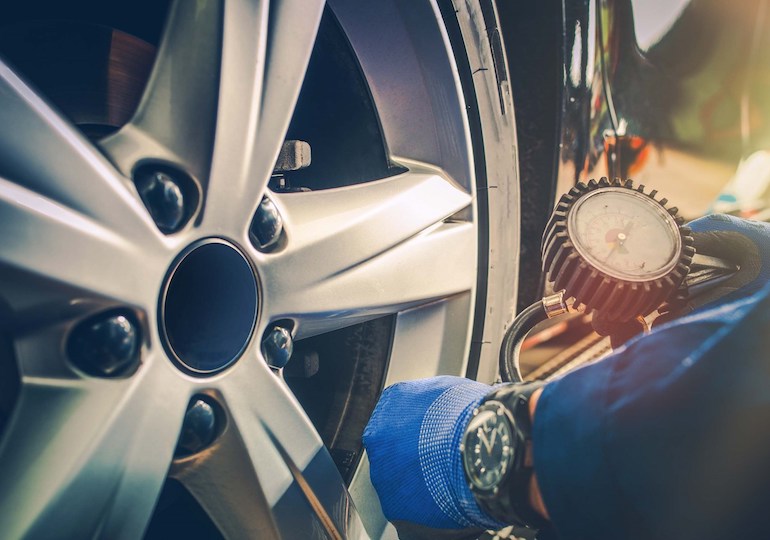CaravanTimes‘ guide to keeping your caravan snug and safe this winter
Whether you’ve made your last trip for the year and have stowed your trusty caravan away, or have bought a brand new model and are afraid the cold will get the upper hand, our simple tips and tricks for winter caravan care are sure to come in handy. So read on to see how you can ensure your caravan remains in perfect condition for the winter months ahead.
Storage
If you’re storing your caravan away this winter, you’ll need to take slightly different protective measures than if you were to brave the cold whilst travelling and staying inside it. For starters, if you are putting your caravan into open storage, remember to avoid low-lying areas, hanging branches and, needless to say, old buildings with the possibility of falling roof tiles. Returning to your caravan to take it along on your first adventure of the season only to find it’s been damaged isn’t too ideal.
Also remember to take care of your tyres. Our resident caravan experts tell us that tyres aren’t great fans of sitting on the same tread for long periods of time and, as a result, could affect tyre pressure or wear and tear of your tyres’ tread. Ensuring you turn your wheels every six to eight weeks will put stop to this and is highly recommended.
Bodywork and exteriors
So, you’ve gotten off to a terrific start; you’ve found a great location to store your caravan away that isn’t in the way of the worst Mother Nature has to offer, but what should you do next? We always recommend that you give the exterior of your home on wheels a pre-spring clean before storing it away.
When it comes to cleaning the outside of your caravan, proprietary caravan cleaning agents are your best bet and provide all the right ingredients to ensure the materials your caravan is made from won’t have suffer detrimental damage. Household cleaning agents are far too corrosive for caravan and motorhome shells, but you could use liquid metal polish for small scratches. Windows are especially susceptible to scratches, so take care whilst cleaning around them. If you really want to go that extra mile, use a good quality polish after you’re done cleaning.
The most important part of caring for the exterior, however, involves checking for dampness and water damage. If you’ve got a damp meter, review spots that have major damage and use sealants to prevent further problems. Also, giving your caravan a clean will ensure you can check for any signs of the onset of mould, which, if left to grow over winter, could create permanent unsightly markings on certain surfaces including aluminium and plastic.

Interiors
Thought the clean up was over? Think again. The inside of your caravan matters too. As many soft furnishings, including pillows and cushions, should be removed and stored in a dry place, and walls and ceilings should be rubbed down with a mild anti-bacterial solution.
The next step is to completely ransack the cupboards, which sounds brutal, but getting rid of every last crumb of food will keep those nasty little rodents away. And as for your fridge, remember it’s pretty imperative that once everything has been done you leave the door ajar after giving that a thorough clean too.
Moving through to the bedroom, we’d advise you to leave any fixed beds in the open position in order to aid air circulation. And whilst windows need to be shut, leave the vents uncovered as they can be a potential fire hazard.
Covers and awnings
If you’re going to fit a cover, it’s safe to say tarp or polyurethane covers are the best bet and will undoubtedly protect your caravan from all a harsh winter can throw at it. But these materials also collect moisture and promote the growth of mould, so make sure you use a breathable cover, or your worst fears could turn into reality when you return to find your pride and joy has become nothing but an agricultural project. You could also go for protective coating fluid or overwintering wax, both of which work well. We’d recommend covering up in any case, and here’s why.
When it comes to removing your awning, make sure you’ve given it a thorough wash and dry before packing them away, to prevent mould setting in. Another great alternative is to lay the awning flat on a dry surface and brushing it with plain water to remove stubborn stains. Remember not to get any oil or grease onto awning poles, as this might seep and cause unnecessary damage.

Gas
It goes without saying that all gas valves on top of cylinders are closed or that regulators are disconnected from the cylinders with caps fitted over the ends or protruding pipework. Try to store any gas cylinders in the dedicated gas locker in your caravan and make sure any cylinders are at least two metres away from ignitable materials and heat, open drains, buildings or corrosive, oxidant or toxic materials. When playing around with the gas, ensure your engine and electrical equipment is off. Be sure to check out our handy video to ensure you’re taking the utmost precautions with your gas system.
On another note, make sure that, if putting your caravan into storage, you are able to store any gas cylinders for the particular length of time you need. Some certain places have a specific policy on this that should be adhered to.
Electrics
It’s not as if you’re going to forget the pleasure all of that electricity brings throughout the year when you’re touring around the country, so now it’s time to give something back. In order to provide your caravan with the best winter experience possible, hooking it up to an electricity supply throughout the harsh winter months can work wonders. Not only will this enable you to power up the central heating periodically (if your heating has such a facility), but will also help you keep your battery in good condition.
If the above seems like it’s not an option, make sure your caravan’s battery is left isolated from all 12V equipment by either using the isolation switch or disconnecting it. But another good alternative would be to completely remove the battery and charge it periodically in the warmth of your own home. The above two alternatives would not obviously be possibly should you have a security tracking system dependent on the battery to work, and if that is the case we’d highly recommend charging your battery every six weeks.

Water systems
We know that this is where everyone gets stymied, so we’ve got you completely covered when it comes to your caravan’s water system. Switch off your water supply, but leave the taps turned on so as to let air into the system. For mixer taps, ensure the lever is central to allow both hot and cold to drain accordingly. Also, make sure all drain vales are opened and any plugs are removed. Ensure any filters are removed too – these can be saved for a good old spring sterilisation session. With on-board pumps, run these for a couple of minutes in order to clear them of water and also drain any portable water containers too and ensure these are dry in order to prevent mould from setting in. If you’re not sure how to drain your water system, watch our helpful video here.
When it comes to waste tanks, it goes without saying that you’ll need to flush these out and clean them thoroughly. Again, ensure these are dry. Also, clean and dry the valve blade separating the waste tank from the toilet with a recommended seal lubricant and leave it partially open.
Finally, whether you’re a novice when it comes to caravan care or a real expert, always check with your insurance providers so you don’t end up violating any policies. We at CaravanTimes hope that both you and your caravan have a wonderfully snug and safe winter this year, but please bare in mind this is by no way an exhaustive list and we’re sure you’ve got your own tips and advice that can help during those cold, chilly months ahead. If so, we’d love to hear what it is, so share your tips below.

